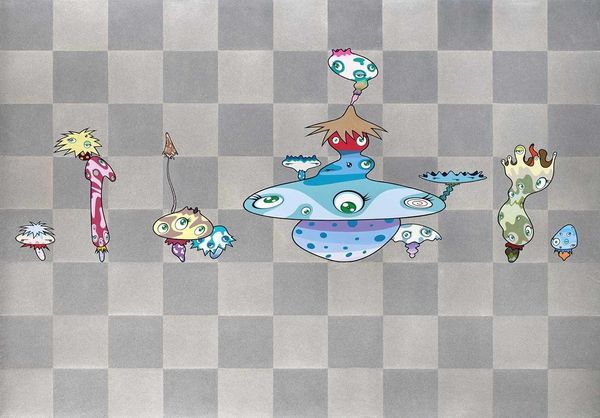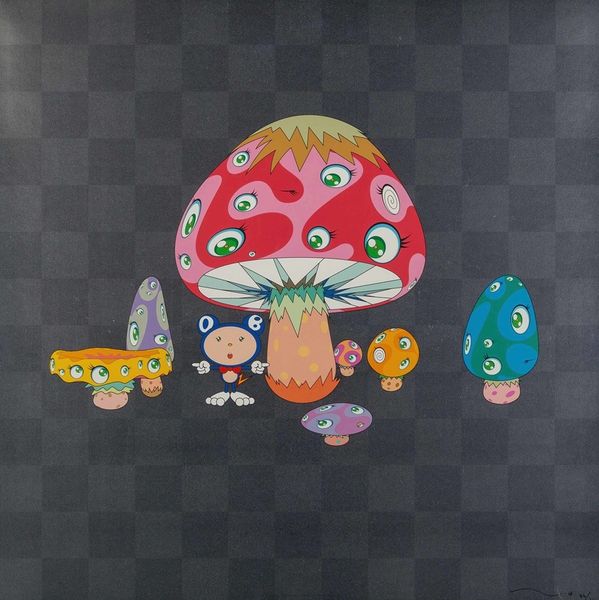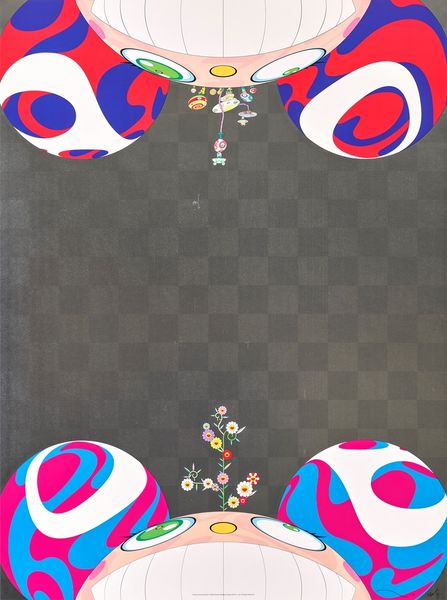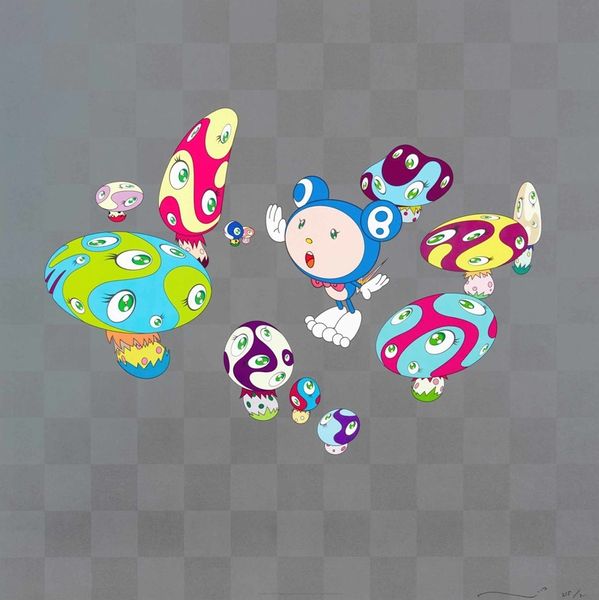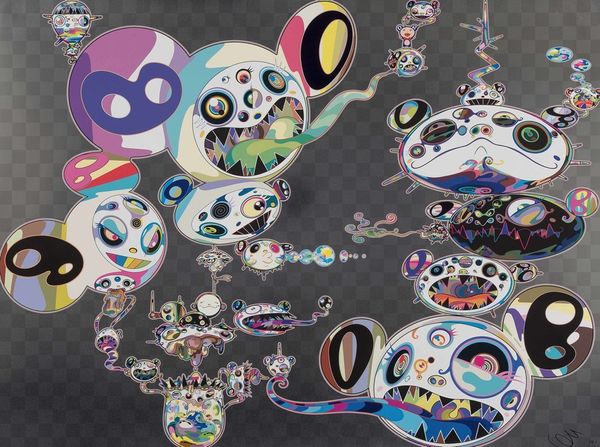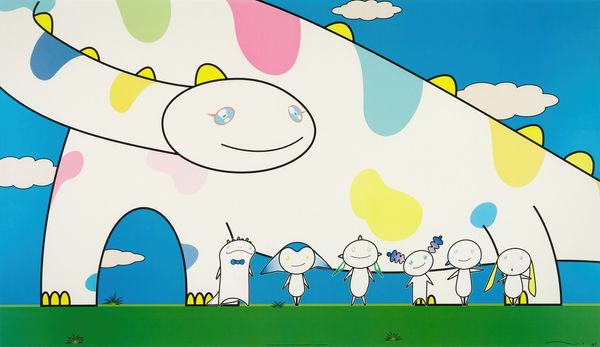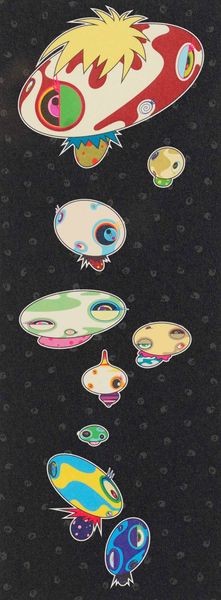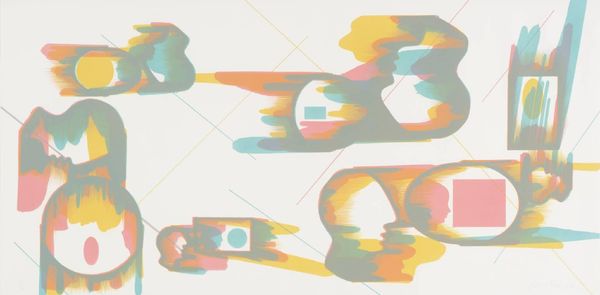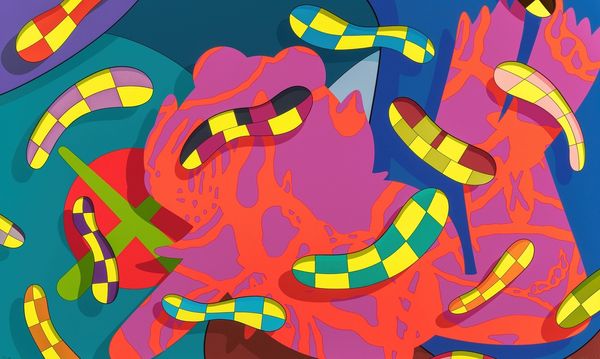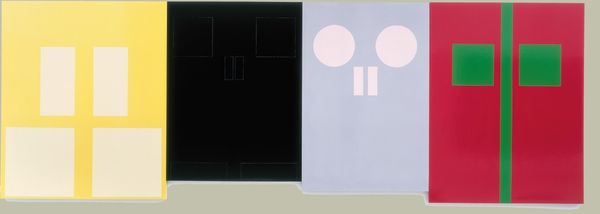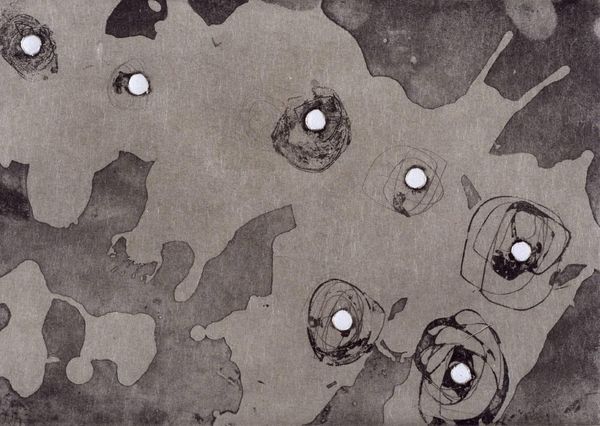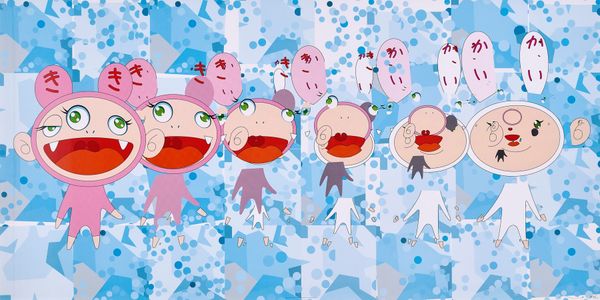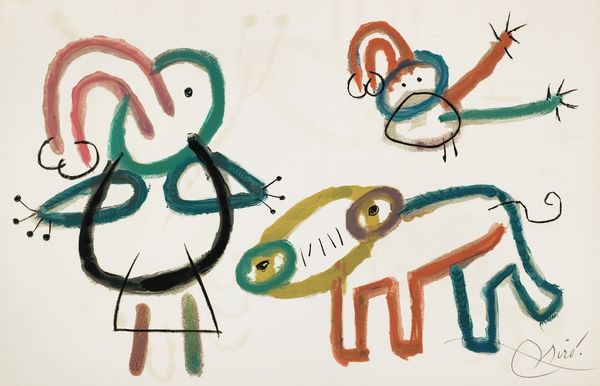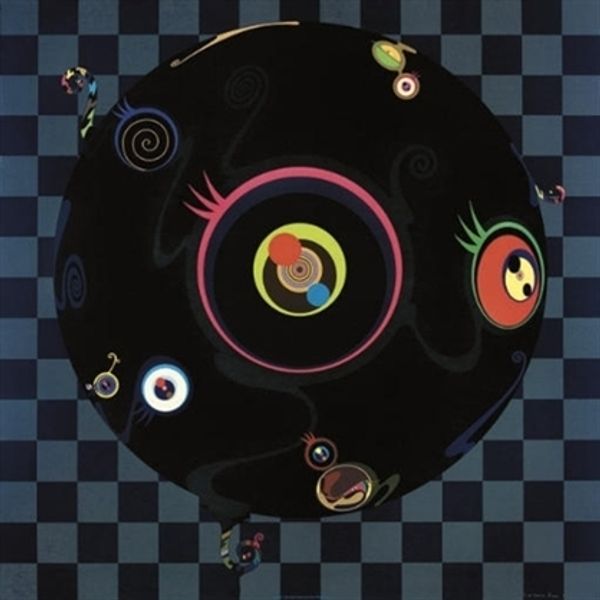
#
neo-pop
Copyright: Modern Artists: Artvee
Curator: Okay, first impression. I'm getting Alice in Wonderland meets Super Mario Bros. There's this…disquieting cuteness to it that’s really doing something for me. Editor: You’ve just walked up to Takashi Murakami's "Tightrope Walker" from 2002. Immediately, we notice this strange, yet alluring checkerboard pattern across a massive canvas, acting almost like a stage. Curator: Yeah, and what a stage! Are those psychedelic mushrooms marching towards some kind of cosmic doom or, like, a tea party? I can't quite decide which it is. It's kind of wonderfully unsettling. Editor: Murakami has consistently critiqued the commercialization of art and culture. It's crucial to understanding this painting's deeper resonances within post-modern discourse and what some perceive as its cynical undertones. What appears initially cute, has an aggressive undertone when one considers its relation to social commentary and capitalism's spread. Curator: Oh, absolutely. The superflat aesthetic, the intentionally vapid smiles and enormous cartoon eyes—it’s not just about cute; it's a reflection on consumer culture's surface level engagement with things. Makes you question what lurks beneath the veneer. I mean, "Tightrope Walker", the name, suggests precariousness, instability… the risk of it all tumbling down. I’m wondering whether the checkerboard signals some idea of chance as well, maybe mirroring that risky balance he identifies. Editor: Right. Post-war Japan witnessed the American occupation's influences that continue to impact Japanese visual culture and aesthetics to this day. You could see the development of pop-art as the tension between traditional aesthetic principles colliding with the allure and pressures exerted by Western ideologies on an entire society. This also includes art institutions shaping art reception for the mainstream. Curator: I keep circling back to how inviting and creepy the work is at the same time. You've got these soft colors, adorable forms…but then a slight edge—a bit like cotton candy with razor blades inside, right? And he repeats eyes everywhere which, depending on your mood, is either hilarious or disturbing. Editor: Well said! It's not just the cute factor but the strategic deployment of cuteness—almost as a weapon, against, let’s say, the expectations that come with 'serious' art. Its accessibility means it’s a great vehicle to get the message to a wide range of audiences, challenging long held conventions around "high" versus "low" culture. Curator: Thinking more on the materials, the fact this exists in the realm of digital art…does that add to that flattening of experience we talked about earlier, maybe the experience of existing within mediated space that blurs those real-world distinctions. Everything’s curated, everything's stylized. It brings that tension more alive. Editor: Absolutely. By employing popular, visually accessible languages, it engages in a powerful dialogue about who gets to define value in both the art world and society at large. I agree; thinking about all that only amplifies its impact. Curator: This just reminds us, again and again, art shouldn't ever be fully trusted; or rather that our trust needs to evolve! Editor: A critical provocation about consumerism dressed as candy, a commentary on our current state! What a piece.
Comments
No comments
Be the first to comment and join the conversation on the ultimate creative platform.
